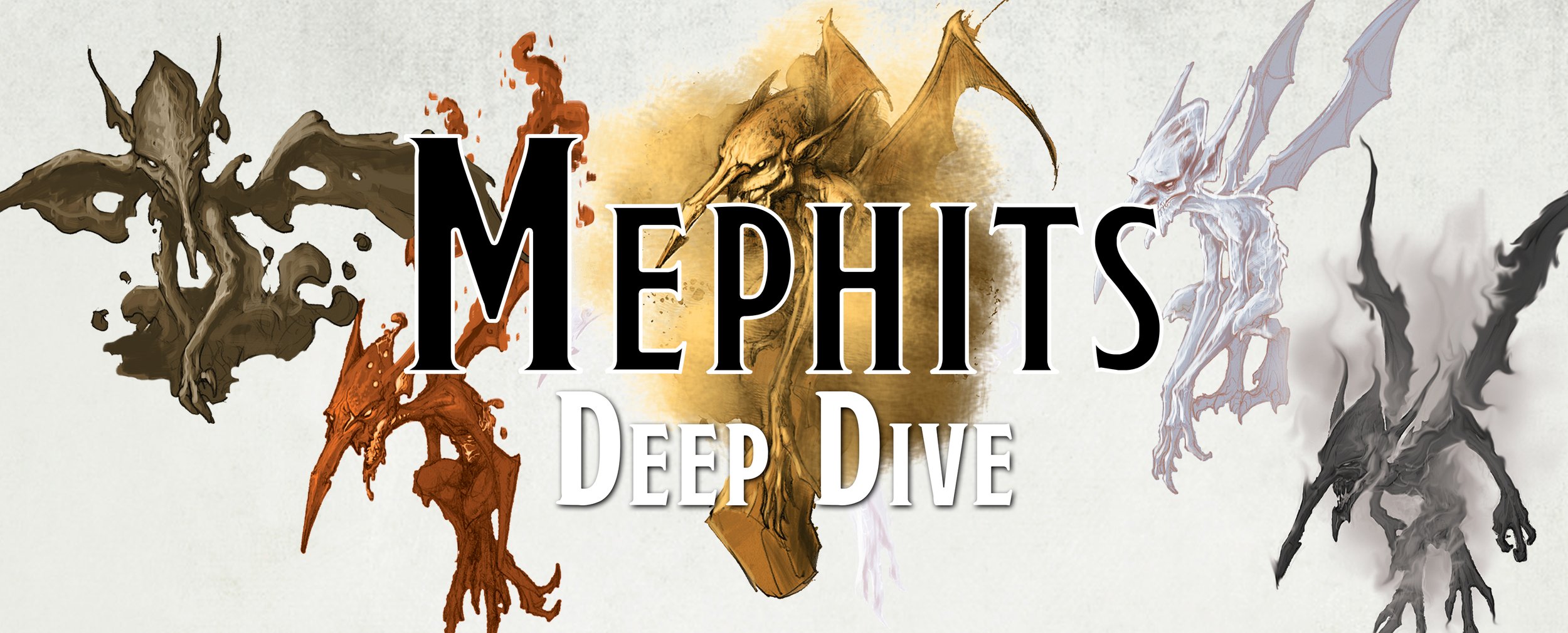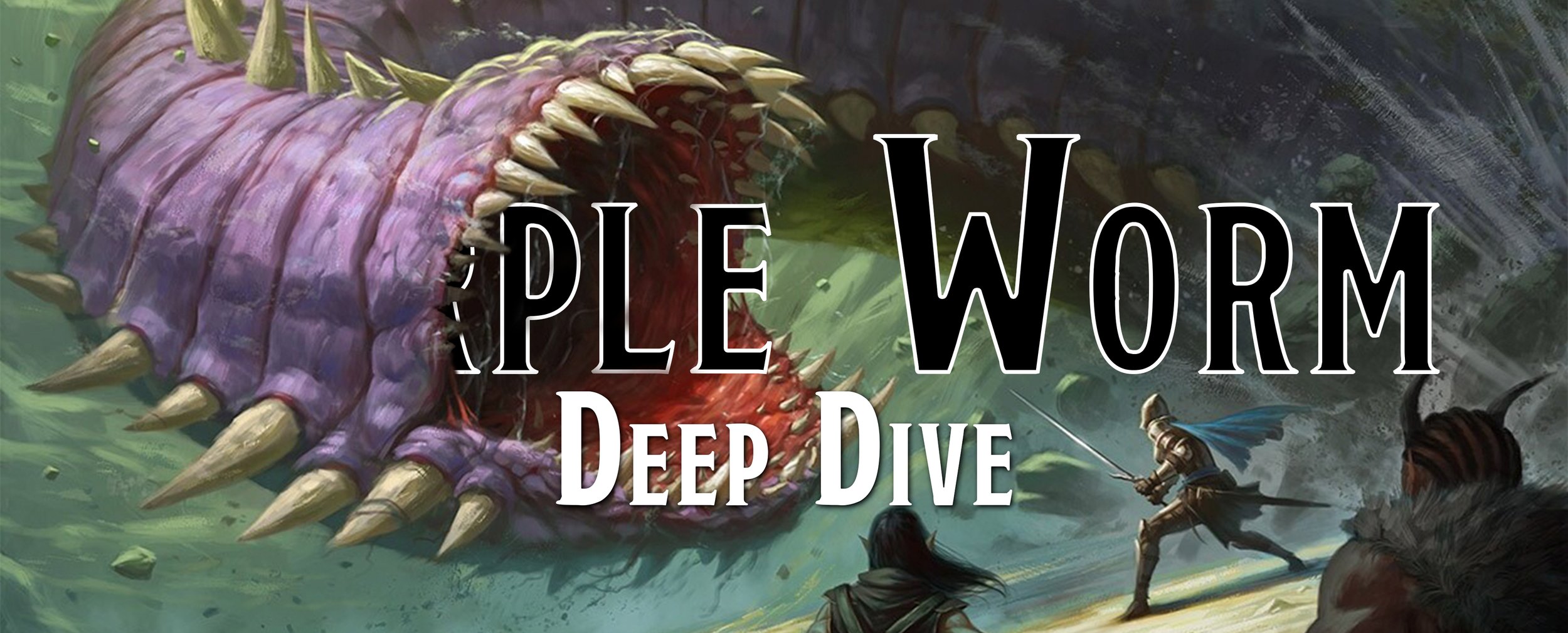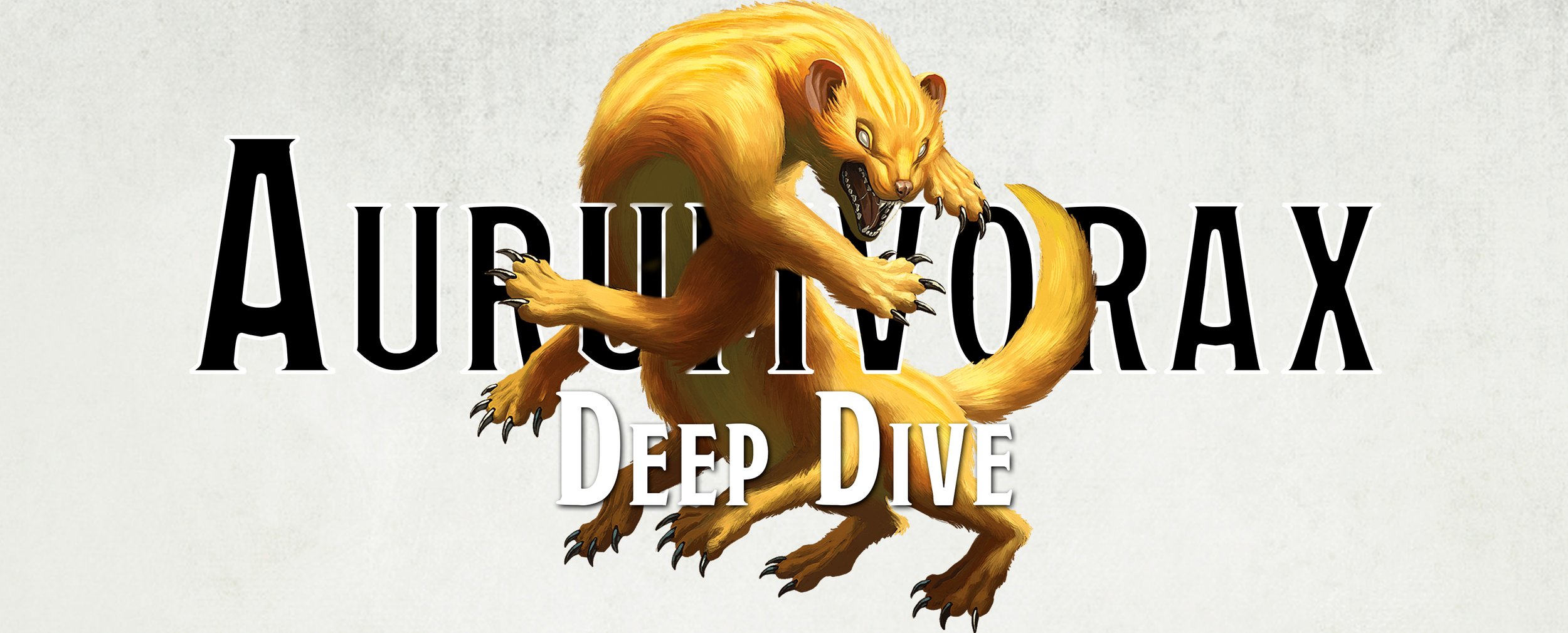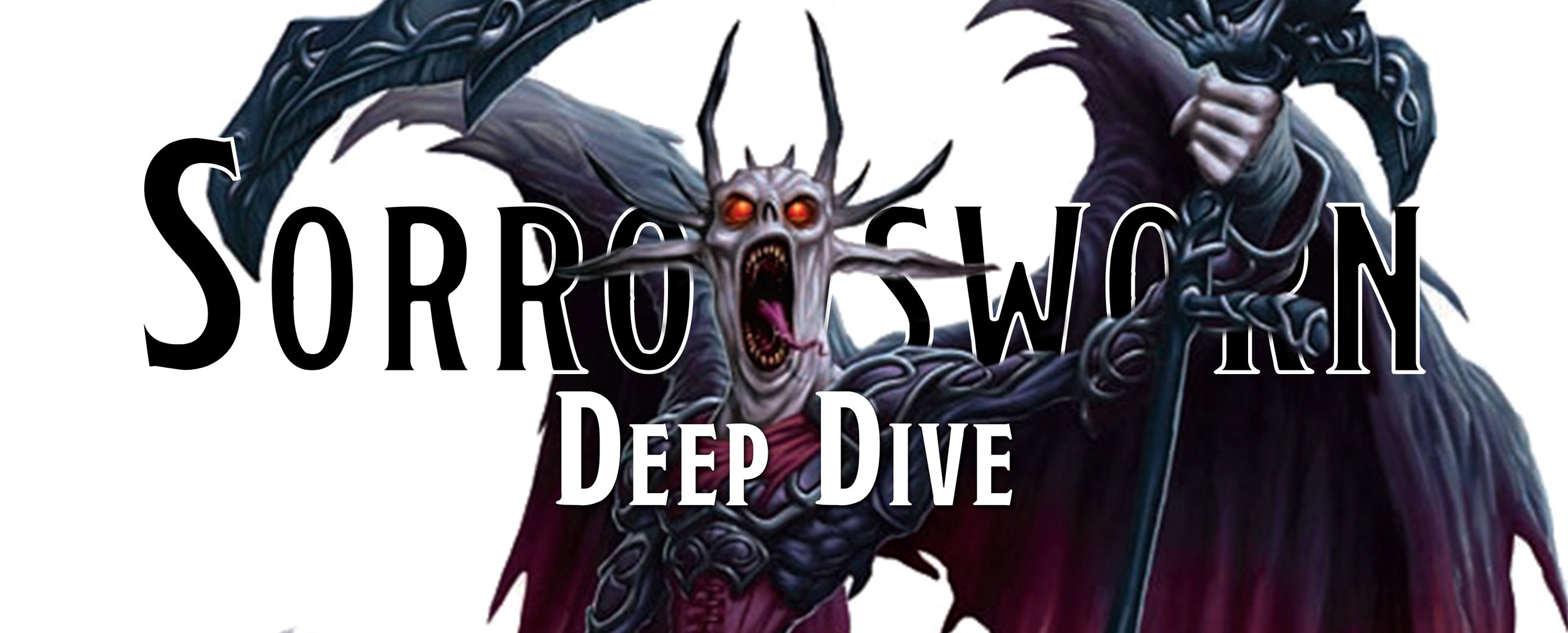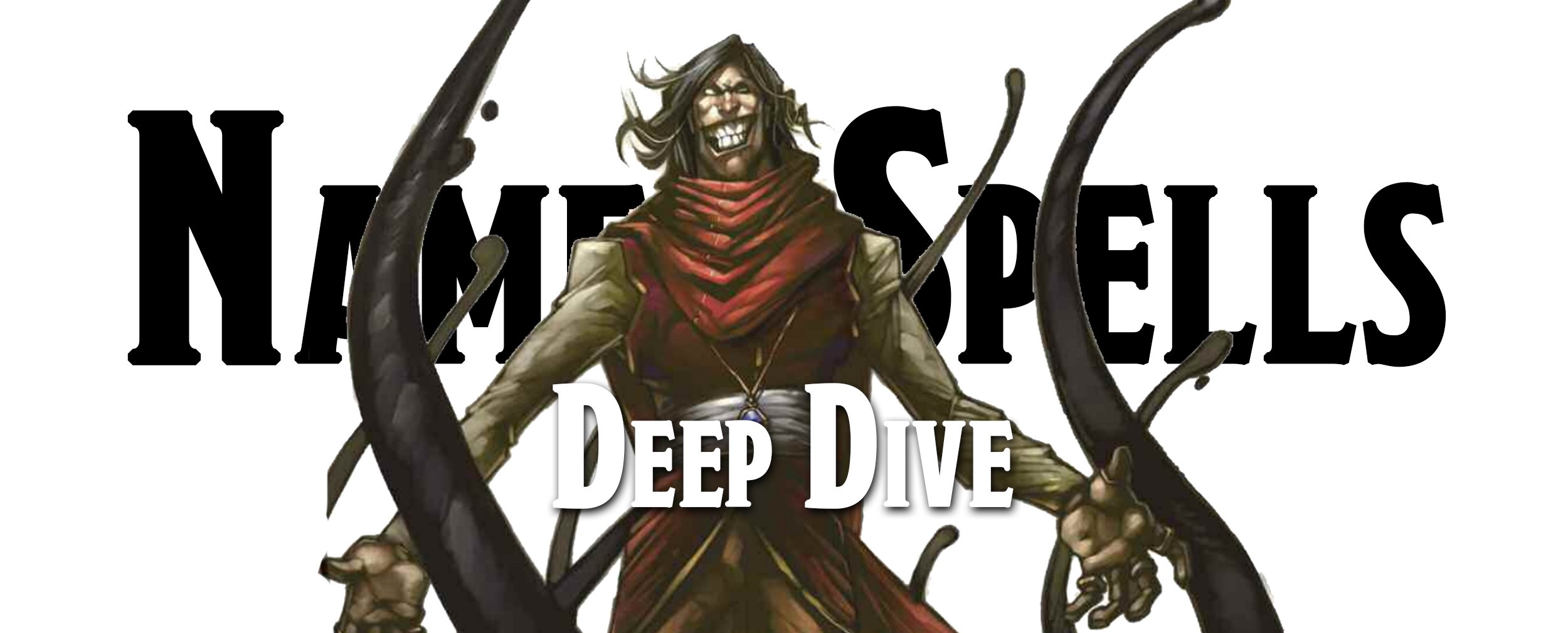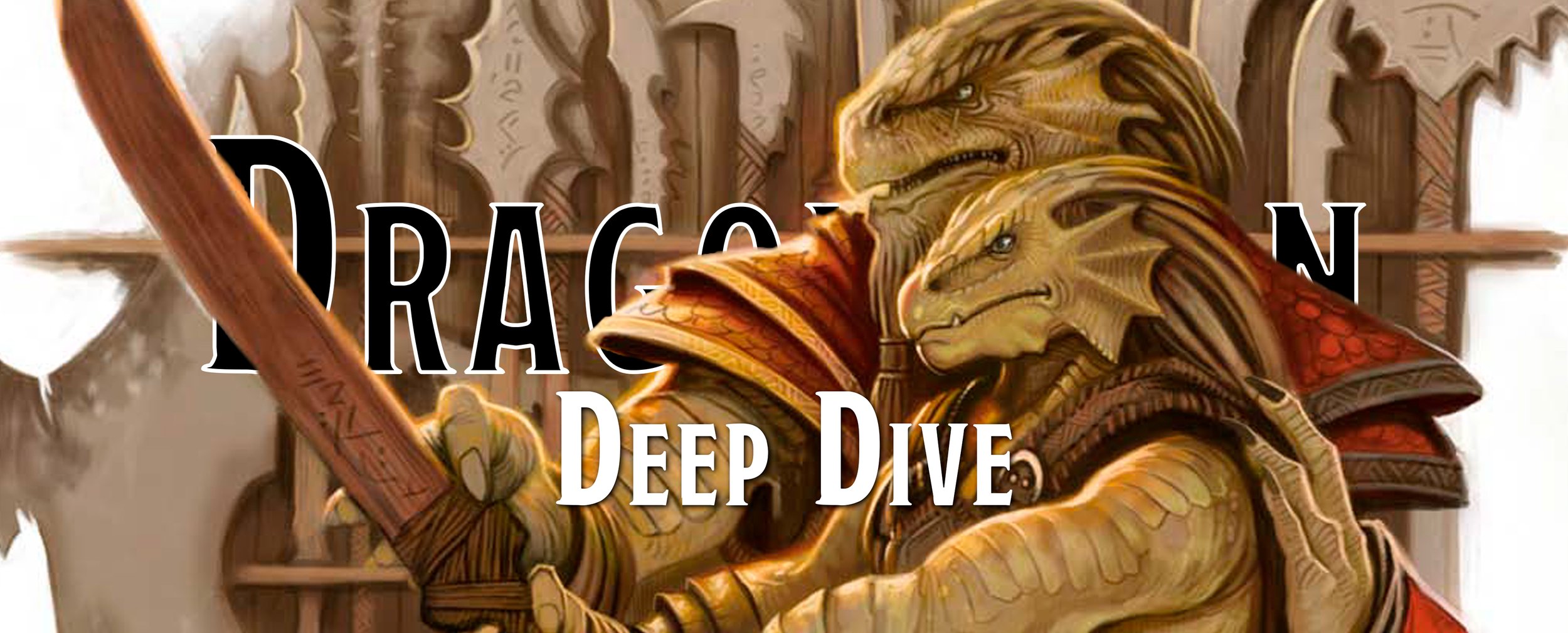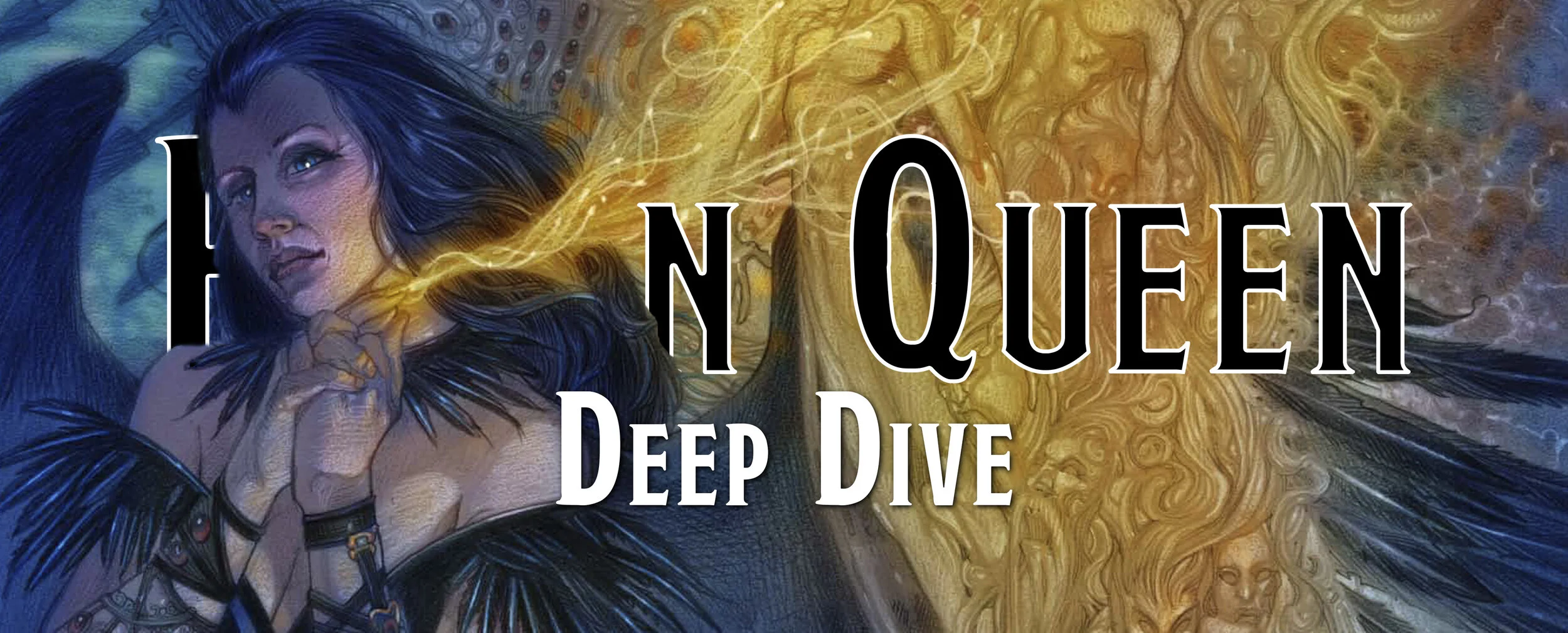Deep Dive - The Dryad
The Dryad originates as a tree spirit from Greek mythology and would inhabit trees and forests. These creatures kept to themselves and avoided contact with most other beings. While they may not have worshiped the Greek goddess Artemis, they could often be found with her and are described as friends.
Dryad is often just a generic word for a tree-spirit nymph, there are several more specific dryads like the daphnaie, epimelides hamadryad, and the meliae. Each of these were tied to specific types of trees like the epimelides often inhabited fruit trees, the daphnaie resided in laurel trees, and the meliae could be found in walnut trees. The hamadryad is unique as it is considered to be more powerful than the regular dryads and they were actually an integral part of a tree. To cut down a tree occupied by a hamadryad was considered to be the same as killing the dryad and mortals would be punished for such crimes.
In Dungeons & Dragons, the Dryad retains many of these features but also develops its lore within the game. Elves, trees, and charm spells all make up the Dryad who becomes more like a mini-Lorax than a fey creature bound to a single tree.
OD&D - Dryad
No. Appearing: 1-6
Armor Class: 5
Move: 12”
Hit Dice: 2
% in Lair: 20%
No. of Attacks: 1
Damage/Attack: 1-4 or by weapon type
Treasure: Type D
Introductions to the Dryad take place in the Dungeons & Dragons Box Set - Book 2: Monsters & Treasures (1973), and where it is described as beautiful tree spirits with powerful abilities. It goes on to say that the Dryads have their own tree and that they never travel very far from them, which just means that they are homebodies and we can respect that.
Despite Dryads only hanging out a few hundred feet around their tree, they know every part of the woods around them and we can only assume that means somehow, they just know the woods they exist in… or they only live in very small forests made up of a few dozen trees. Who knows, Dryads are weird and mysterious.
With roots back to their Greek mythology, Dryads are naturally shy and abstain from violence, though that starts to fall apart when you see what they can do. These tree nymphs have a very powerful version of the charm person spell that allows them to completely charm any mammalian and man-sized creature that they want including sprites, pixies, kobolds, goblins, orcs, hobgoblins, and gnolls. This spell is considered to be powerful because those who try to save against it takes a 10% penalty on their rolls. Also, a charm person spell doesn’t end until someone casts dispel magic on you, so that’s going to be a problem if you were hoping to wait out being charmed.
Let’s say you want to visit the forest and, for whatever reason, want to avoid being mind-controlled by the local Dryad, you know because you don’t like being forced to do something against your will. Weird, we know, but it’s just a hypothetical. So let’s say you want to go into the forest, gather some firewood, and make it out without getting a new best friend. Easy, all you have to do is avoid the Dryad’s tree and don’t follow them around in the forest if you do spot them. If you do get too close to the Dryad’s tree, which is easy to do as they don’t exactly mark them, there is a 90% chance the Dryad will attempt to charm you. So, you’re screwed. But don’t worry, we aren’t given any specifics about what will happen to you, just that you’ll never leave the forest ever again. But hey, you might still be alive! Just picking beautiful flowers for your new Dryad goddess and never able to go back and see your family ever again!
Basic D&D - Dryad
Armor Class: 5
Hit Dice: 2*
Move: 120’ (40’)
Attacks: See below
Damage: 0
No. Appearing: 0 (1-6)
Save As: Fighter 4 [Elf: 4]
Morale: 6
Treasure Type: D
Alignment: Neutral
XP Value: 25
The Dryad is forced to wait until the 1981 Moldvay/Cook Expert Box Set but at least gets to show up again in the 1983 BECMI Expert Box Set. They are still described as beautiful though this time it clarifies that they are all women and if they are ever taken away from their tree, more than 240 feet or you destroy their tree, they die. Which really takes being a homebody to the next level.
Still extremely shy and non-violent, they are still more than happy to cast charm person on anyone snooping around or gets too close. The 1981 set remains the position that the person is never seen again with no information on what happens to the unlucky individual, while 1983 reveals just a tiny bit of information. If you are… fortunate? enough to watch, you can watch as your best friend gets charmed by the Dryad and then steps into the Dryad’s tree. You’ll never see that individual again and, even if you chop down the tree, you’ll never find a trace of them. Spooky.
Most of the time, Dryads have no interest in combat, though if threatened, and their charms aren’t working, they can fight though they are more likely to meld back into their tree and hope you run away. Which is good news for you! This means they won’t stop as you steal all their treasure that they hide under the roots of their tree.
What kind of treasure can you hope for from this tree hugger? Good news, you could be the lucky recipient of 1,000s of copper, silver, and gold pieces, which makes us wonder what they are doing with all that money, as well as gems and jewels and potentially some magic items. Obviously, these are all bribes from the Dryad to leave her alone, we’re sure the Dryad won’t mind if you take it all.
AD&D - Dryad
Frequency: Very Rare
No. Appearing: 1-6
Armor Class: 9
Move: 12”
Hit Dice: 2
% in Lair: 70%
Treasure Type: M (x100), Q (x10)
No. of Attacks: 1
Damage/Attack: Dagger
Special Attacks: Charm
Special Defenses: See Below
Magic Resistance: 50%
Intelligence: High
Alignment: Neutral
Size: M
Psionic Ability: Nil
Monster Manual, 1977 TSR Inc.
Introduced in the Monster Manual (1977), the first line of the description states they are beautiful and alluring tree sprites. We go onto learn that they are only ever found in oak trees and can now wander up to 360 feet from their favorite treehouse. While it doesn’t specify, we are given the impression that Dryads are all female, or at least, assume the form of females.
The Dryads are still the same old anti-social lot though if you are able to convince them you mean no harm, they might be willing to help you out. Maybe if you offer to make an Ikea run for them, since they are a bit tied to their tree, they’ll let you know what foulness is haunting their forest and where it is located.
Once again, they can disappear into their tree but this edition brings something new to the table. Dryads now get a new spell they can cast, dimension door. This allows them to run back to the safety of their tree and hide away from any creatures who show up unannounced looking to hang out for a bit longer than any normal guest should stay over for. Of course, their next bit of defense is their charm person spell which hasn’t changed for this edition, though Dryads are very interested in getting male humanoids with a Charisma of 16 or higher to hang out with them. Most creatures who succumb to a charm person spell are never seen again, but some might show up back in town in 1 to 4 years.
Dragon #087, July 1984 TSR Inc.
Dragon magazine #87 (July 1984) brings us a neat look at the Dryad in the Ecology of the Dryad by Shaun Wilson. Our narrator is an old sage named Malec, who is teaching his students outdoors along with a guest named Belzime, a druid of the Eastern Woods, and her three attendants. What better setting than this to talk about Dryads! We receive some in-depth details about the relationship between a Dryad and the oak tree. Individual oak trees had a special gift that allowed them to create a physical manifestation of their soul, which is a partial explanation for Dryads as Dryads can also reproduce with other humanoids to produce children who are always girl Dryads.
We find out that dryads do not need to eat, though they can and during the winter months they might eat some food to help their great oak tree out. They enjoy nuts and berries and spice up their food if there are certain roots nearby. During the winter, Dryads basically hibernate as their tree doesn’t have enough energy during the winter months to support their physical manifestation.
The Dryad herself lives within the tree, joining fully with its soul and becoming one with it. It should also be noted that a Dryad can merge with other trees as well, but will not stay within the tree for very long. When a Dryad feels seriously threatened, she can become immaterial, when she does this, she instantaneously teleports back to her home tree, safe and sound, and it merges with the tree's soul. If anyone attacks a dryad, she would vanish, and teleport back to her tree, alerting her woodland allies in the process. Those allies include many powerful creatures, including treants, satyrs, elves, sprites, and druids.
The narrator continues by informing the students that Dryad's find attractive young humanoids, especially humans and elves, and will keep them as treasures, much like an adventurer who keeps the loot they find in a dungeon. It goes on to explain what happens to those poor souls who disappear forever when they succumb to the charms of a Dryad. It's not done out of malice, but beauty enthralls Dryads, and they want to keep and admire them. Many times these men don't want to be rescued as the Dryad has completely entranced them and if they do escape, or the spell is broken, the Drayd will let them go willingly and perhaps even give them some gems or coins as a token of their appreciation.
Dragon #101, September 1985 TSR Inc.
In Dragon Magazine #101 (Sept. 1985), we learn more information about the Hamadryad, a powerful version of the Dryad with additional power and abilities. The Hamadryad still lives deep in the forest is bound to a tree. Unlike a dryad, a Hamadryad can leave the vicinity of the oak tree and travel any distance from the tree. It doesn't mean they will always be leaving their forest, as they have a deep disdain for other locations, but they can at least go on a pizza run for the rest of the Dryads. They are protectors of the entire forest in which they dwell, and while still shy, they will work with rangers and druid to keep the forest free of danger. They are more potent than common cousins, being able to use the following powers at will, one per round: animal friendship, entangle, pass without trace, speak with animals, and quench fire. It is also said that the touch of a Hamadryad can cure a horrible disease known as Nilbogism, which can cause certain goblins to go a bit crazy. However, this rumor is unconfirmed.
Hamadryad can still charm individuals though being charmed doesn't mean you are going to vanish for multiple years. A Hamadryad usually requires the charmed individual to perform one service to aid the forest, such as defending it from evil creatures intruding, or those that would seek to destroy trees. You now get a chance to become the Lorax! or… at least, a squire to the Lorax. Once you complete the task, you are then released from the Hamadryad's charm. Slight problem, though, is that you are probably set free in a Dryad grove, so there is a better than average chance that you will be charmed by an actual Dryad. Now you can start worrying about disappearing forever.
Now, you might be wondering how a Hamadryad got so powerful. Well, much like the plant life that surrounds them, they get their energy from sunlight, which produces chlorophyll in their bright green hair. Hamadryads appear to be stunningly beautiful elven or human females, with bright green eyes and long green hair. They are also formed from the greatest of ancient oak trees and have been around for hundreds of years. Unfortunately for these uber-Dryads, if their hair is cut off for 20 days, or they are removed from sunlight for that same length of time, they will die.
Lastly, in Dragon Magazine #109 (May 1986), the Half-Dryad playable race arrives. They are the result of a satyr and a human woman, or Dryad and a mortal man relationship. A half-dryad appears as a beautiful human woman, with luscious green hair. What’s interesting is that the previous Ecology of the Dryad stated that Dryads can only produce female Dryads with no mention of half-bloods, obviously, Dryads are too ashamed to talk about their half-children. At this point, a half-Dryad can’t bond or merge with a tree and they must come to terms that they aren’t a real Dryad, at this point, the Half-Dryad will then seek out human, half-elven, or elven humanoids to learn about their other half. If a half-Dryad is born in human society, they will find themselves developing an intense interest in all things forest-related.
2e - Dryad
Climate/Terrain: Secluded oak groves
Frequency: Very rare
Organization: Solitary
Activity Cycle: Any
Diet: Herbivore
Intelligence: High (13-14)
Treasure: M (x100), Q (x10)
Alignment: Neutral
No. Appearing: 1 or 1-6
Armor Class: 9
Movement: 12
Hit Dice: 9
THAC0: 19
No. of Attacks: 1
Damage/Attack: 1-4 (knife)
Special Attacks: Charm
Special Defenses: See below
Magic Resistance: 50%
Size: M (5 tall)
Morale: Steady (12)
XP Value: 975
Monstrous Compendium Volume 2, 1989 TSR Inc.
The Dryad is introduced in the Monstrous Compendium Volume 2 (1989) and later reprinted in the Monstrous Manual (1993). In both, they retain their description of being attractive and intelligent, that they are quite alluring with delicate features and with hair and skin that changes with the season. During the winter months, they could easily be mistaken for elf maidens with their snow-white skin and long white hair, while in the spring and summer, their hair turns dark green and their skin is lightly tanned.
Monster Manual, 1993 TSR Inc.
While much of the Dryad stays the same, there are a few differences in this edition worth pointing out and the ecology of their kind is expanded upon a bit. While they still have a range that is dangerous for them to cross, this edition is 360 yards from their tree, and it isn’t that they will immediately die but rather will die within 36 hours if they don’t return to their tree. Which can really put a damper on a weekend vacation from the forest.
Additionally, a Dryad will also suffer any damage that her tree takes, and we do not recommend hurting a Dryad's tree. Doing such a heinous act will bring about the worst in a Dryad, and she will defend the tree with her very life, which is fair because if the tree dies, so does she. In very rare cases, these solitary creatures will congregate and up to six Dyrads may live in a single location. These Dryads and their trees will be within 100 yards of one another, and the dryads' will all be neighbors. They will defend each other and each other's tree, but they don’t really want each other’s company as they are solitary creatures.
Dragon #155, March 1995 TSR Inc.
The Dryad makes a brief appearance in Dragon Magazine #155 (March 1995) in the article The Folk of the Faerie Kingdom by Vince Garcia. This article is focused on the various fey and faeries that inhabit the world and provides some inspiration on how you can incorporate them into your own games. While there isn’t a lot of detail, it does describe one possible legend for the creation of the Dryad, for during the days of creation the Queen of Faeries was planting gardens. It is thought that at the center of these gardens, the Dryad’s sprouted from a seed and became the physical manifestations of the gardens and the defenders of it. Dryads can be used in your own games when their gardens and forests are attacked, using their charm abilities to help encourage adventurers and warriors.
Monstrous Compendium - Annual Volume 3, 1996 TSR Inc.
The Hamadryad returns in the Monstrous Compendium - Annual Volume 3 (1996) and with their return, not much more information is revealed about them. They are still the powerful Dryads and have powers that other Dryads might kill for… then again, probably not. Dryads aren’t very violent creatures. Which is probably why the Hamadryad acts as the older, protective sister to the Dryads. She is often called on to help defend the ancient forests where she resides, and she travels the world without ill-effects from the distance away from her oak tree. Interestingly, Hamadryad gives away all of their treasure they find to the Dryads, letting them keep the treasure secure. It’s thought they did this because otherwise, while a Hamadryad is away stopping forest fires, adventurers might decide to cut down every tree in the forest and search for her treasure hoard.
Dragon #251, September 1998 TSR Inc.
Finally, in Dragon Magazine #251 (Sept. 1998), we find two new types of Dryad's and some new Dryad themed magical items in the article Beyond the Tree by Miranda Horner. The creation of these Dryads is based on the dragon purge in the Dragonlance series, which is located on Krynn. The first is a Quested Dryad, a Dryad who may leave her tree to go on a quest, or possibly a bunch of mini-quests that usually revolve around restoring places that have been corrupted to their original state. The Shaped Dryad also has a quest but is one of singular nature, and upon completion, the Shaped Dryad dies. A Shaped Dryad has had their tree destroyed by a dragon lord, but before she could die, the severity of the shock "cauterized' the wound, and the Dryad was able to survive. Her only objective is to wander the land in an attempt to restore her grove to how it used to be.
Dragon #251, September 1998 TSR Inc.
These Dryads are also given access to new spells and magic items to assist them in their quests, and there is even player information on how you could play as one of the two Dryads. Without much surprise, most of these magic items and new spells are focused on the growth of a forest or using nature to thwart your foes. One such item is the Spear of Entanglement that, when thrown and strikes a creature, wraps thorny vines around the creature and they are restrained by it. Every round they remain wrapped up in the thorny vines, they continue to take damage until they are able to escape or the wielder of the spear calls back the vines. Of course, the Dryad would only ever use ‘living’ wood for their spear and so they must water it for three hours every day or the spear ‘dies’ and loses all enchantments.
3e/3.5e - Dryad
Medium Fey
Hit Dice: 4d6 (14 hp)
Initiative: +4
Speed: 30 ft. (6 squares)
Armor Class: 17(+4 Dex, +3 natural), touch 14, flat-footed 13
Base Attack/Grapple: +2/+2
Attack: Dagger +6 (1d4/19-20) or masterwork longbow +7 ranged (1d8/×3)
Full Attack: Dagger +6 melee (1d4/19–20) or masterwork longbow +7 ranged (1d8/×3)
Space/Reach: 5 ft./5 ft.
Special Attacks: Spell-like abilities
Special Qualities: Damage reduction 5/cold iron, tree dependent, wild empathy
Saves: Fort +3, Ref +8, Will +6
Abilities:Str 10, Dex 19, Con 11, Int 14, Wis 15, Cha 18
Skills: Escape Artist +11, Handle Animal +11, Knowledge (nature) +11, Listen +9, Move Silently +11, Ride +6, Spot +9, Survival +9, Use Rope +4 (+6 with bindings)
Feats: Greater Fortitude, QWeapon Finesse
Environment: Temperate forests
Organization: Solitary or grove (4-7)
Challenge Rating: 3
Treasure: Standard
Alignment: Usually chaotic good
Advancement: By character class
Level Adjustment: -
Monster Manual, 2000 WotC
The Dryad appears in the 3rd Edition Monster Manual (2000) and then again in the 3.5 Monster Manual (2003). The two descriptions are quite different, but neither strays from the earlier edition's text found in the other editions, each just focuses on different parts of the Dryad's background. The 3e focuses on how shy and non-violent the Dryad is, immediately talking about the charm person spell being their primary form of attack and how they will defend their tree at any cost. In 3.5e, Dryad's charm ability and the passionate defense of her tree is detailed in the first paragraph. The focus then shifts to the mystery behind the Dryad, even going as far as to say that how other woodland creatures interact with Dryad is somewhat of an enigma. The biggest change between them is the looks of a Dryad, with 3e leaning towards the seductress-humanoid focused on charming handsome male humanoids while 3.5e paints the picture of a feminine figure but with light bark for skin and hair that has a leafy texture, with no mention of its propensity towards seducing men.
Monster Manual, 2004 WotC
Between the two editions, the Dryad gets slightly buffed with more spells, like gaining the entangle, tree shape, suggestion, and others, which all helps it be more of a defender of the forest and she even gets a boost to her hit points and a big boost to her armor class.
Beyond the Dryad being a shy creature, not much else is revealed about her until the next few Monster Manuals. A few different creatures, like satyrs, forest spirits, and tree haunts can be found hanging with their favorite ladies of the forest, the biggest addition is that a Dryad can create a verdant reaver. Found in the Monster Manual V (2007), the verdant reavers were once the humanoid servants of Dryads who, after a year and a day of servitude, find themselves rooted to the forest floor upon waking up. Over the course of a day, they go through a rather painful process as their hair falls out and skin transforms into bark. A typical Dryad will not force one of their charmed servers to go through this process, rather dismissing them or stopping the process from happening, as it is incredibly painful and at the end of the day, wipes all of that creature’s past memories. Evil Dryads are more likely to have lots of verdant reavers as they are quite handy fighters and those Dryads don’t really care about the lives of humanoids.
4e - Dryad
Dryad - Level 9 Skirmisher
Medium fey humanoid (plant) / XP 400
Initiative +9 / Senses Perception +12
HP 92; Bloodied 46
AC 23; Fortitude 22, Reflex 21, Will 21
Speed 8 (forest walk)
Claws (standard; at-will) +14 vs. AC; 1d8+4 damage, or 1d8+9 damage if the target is the only enemy adjacent to the dryad
Decpetive Veil (minor; at will) ✦ Illusion The dryad can disguise itself to appear as any Medium Humanoid, usually a beautiful elf or eladrin. A successful Insight check (opposed by the dryad’s Bluff check) pierces the disguise.
Tree Stride (move; at will) ✦ Teleportation The dryad can teleport 8 squares if it begins and ends it turn adjacent to a tree, a treant, or a plant of Large size or bigger
Alignment Unaligned / Languages Elven
Skills Bluff +10, Insight +12, Stealth +12
Str 19 (+8) | Dex 17 (+7) | Wis 17 (+7) | Con 12 (+5) | Int 10 (+4) | Cha 13 (+5)
Monster Manual, 2008 WotC
The poor Dryad can be found in the Monster Manual (2008) and is shown no love. Beyond a simple stat block, and that Dryads love and will protect a forest, the common Dryad is bereft of information. On top of it all, there is no charm ability. The Dryad, without the ability to charm, is like a t-rex that is a herbivore. Another big change is that they are horrifying tree monsters, people only think they are beautiful elves or eladrin because they can throw an illusion on themselves. These Dryads go one step further since they can’t charm, in that they actively despise creatures in their forests and will be hostile towards them.
The 4th edition attempts to make up for such injustices by introducing us to the Briar Witch Dryad, a stronger Dryad with some fierce abilities. The Briar Witch Dryad has abilities that can trap its prey and if anyone walks too close to them, briars and thorns rip and tear at them. Also, if you think you can just grab on to the Dryad and try to stop her from attacking your allies as you try to explain your side of the story, we recommend you not do that. The moment you grab on to a Briar Witch Dryad, you immediately grab on to thorns and begin bleeding… profusely.
While the Dryad doesn’t get a lot of love in this edition, stripping it of many of its signature abilities, it still shows up in one more place, the Monster Vault (2010). This booklet has many of the most popular monsters in Dungeons & Dragons and is a resource book for more information on monsters, as well as providing additional statblocks to use against your party. This book contains a few more stat blocks of lesser Dryads as well as some information about why the Dryad is so mean in this edition. It describes them as territorial and quick to act on their emotions, always scared that outsiders will destroy their forest. From day to day, they may change their mind on how to handle outsiders, from attacking them in their true form as a horrifying tree monster or warning them off as a beautiful elf maiden.
On top of that, they are linked to the Feywild and see it as their true home. Dryads are a common sight in the wilds of that plane, though they can only be found deep in the forests. Even the elven cities built alongside and with the trees are too chaotic and civilized for a Dryad who prefers seclusion and the natural beauty of a forest.
Monster Vault, 2010 WotC
In 2011, the book Player's Option: Heroes of the Feywild was released, and with it came a wide variety of player options for playing unique races, how to create a character from such a strange world, and more all from the context of the Feywild. One of the character options you can be is a Hamadryad, and while not much changes for them, does provide some insight on how a player might tackle such a challenge. It talks about how Hamadryads are used to getting their way, due to their beguiling beauty, and don’t understand why they can’t have things if they are denied it. Furthermore, it talks about how love, which is a somewhat foreign concept to the Dryads, might drag a Hamadryad out into the world to learn about it and fill the new yawning void in its life.
5e - Dryad
Medium fey, neutral
Armor Class 11 (16 with barkskin)
Hit Points 22 (5d8)
Speed 30 ft.
STR 10(+0) | DEX 12 (+1) | CON 11 (+0 ) | INT 14 (+2) | WIS 15 (+2) | CHA 18 (+4)
Skills Perception +4, Stealth +5
Senses darkvision 60 ft., passive Perception 14
Languages Elvish, Sylvan
Challenge 1 (200 XP)
Innate Spellcasting. The Dryad’s innate spellcasting ability is Charisma (spell save DC 14), The dryad can innately cast the following spells, requiring no material components:
At will: druidcraft
3/day each: entangle, goodberry
1/day each: barkskin, pass without trace, shellelagh
Magic Resistance. The dryad has advantage on saving throws against spells and other magical effects.
Speak with Beasts and Plants. The dryad can communicate with beasts and plants as if they shared a language.
Tree Stride. Once on her turn, the dryad can use 10 feet of her movement to step magically into one living tree within her reach and emerge from a second tree within 60 feet of the first tree, appearing in an unoccupied space within 5 feet of the second tree. Both trees must be Large or bigger.
Club. Melee Weapon Attack: +2 to hit (+6 to hit with shillelagh), reach 5 ft., target. Hit: 2 (1d4) bludgeoning damage, or 8 (1d8+4) bludgeoning damage with shillelagh.
Fey Charm. The dryad targets one humanoid or beast that she can see within30 feet of her. If the target can see the dryad, it must succeed on a DC 14 Wisdom saving throw or be magically charmed. The charmed creature regards the dryad as a trusted friend to be heeded and protected. Although the target isn’t under the dryad’s control,it takes the dryad’s requests or actions in the most favorable way it can.
Each time the dryad or its allies fo anything harmful to the target, it can repeat the saving throw,ending the effect on itself on a success. Otherwise, the effect last 24 hours or untuil the dryad dies, is on a different plane of existence from the target, or ends the effect as a bonus aaction. If a target’s saving throw is successful, the target is immune to the dryad’s Fey Charm for the next 24 hours.
The dryad can have no more than one humanoid and up to three beasts charmed at a time.
Monster Manual, 2014 WotC
The Dryad returns in 5th edition in the Monster Manual (2014), and while at first blush, it looks like things have gotten better for the Dryad, if you look just beneath the bark, you can see it has been nerfed and it’s roots destroyed. No longer is the Dryad the soul of an oak tree given a physical form, now they are lesser fey creatures who have been sentenced to a type of imprisonment by a powerful fey. They are stuck to their tree and transformed into a Dryad, and can only travel a short distance around it, though there is no mention to how far they can travel. But it’s not all negatives, a trapped fey creature will remain beautiful and young so long as their tree remains healthy and alive, and if their tree perishes, so do they.
It seems more like a Dryad is shy and reclusive not because they dislike civilization but rather that they are scared of outsiders who might cut down their tree and end up killing them by accident. This made all the more apparent thanks to their weakened powers. In the past editions, they were more of a challenge for level 5-7 characters, and now they are only a (minor) challenge for 1st level adventurers. So what has changed in their powers?
Well, they get a few spells like entangle or pass without trace, all good for avoiding combat or slowing down their enemies, but they aren’t going to be very useful when trying to permanently remove a logger who wants their tree. Of course, the Dryad could try and charm them, and while they can use their charm all day long, they can only target a single creature once per day and can only have a maximum of one humanoid charmed and up to three charmed beasts at a time. Which, is probably fine, don’t need that many servants out in the woods except… the charm only works for 24 hours… which, doesn’t help the Dryad out when the person comes back the next day and the day after that. No longer do people disappear for years but rather a few hours.
Beyond these horrible slights, there isn’t much else about the Dryad, even their physical form isn’t described but we do get a picture of a feminine form that appears to be part humanoid and part tree and is light greenish and yellow. The poor Dryad doesn’t get much else to talk about with much of her description simply a reiteration of the information in their stat block. The final bit of somewhat interesting-ness of the Dryad is that they do get a very minor appearance in two adventures Baldur’s Gate - Descent into Avernus (2019) where the Dryad trees were poisoned by a hag and were transformed into banshees. If you can distract them with a flower, a sweet kiss, or something else, you might appease them and they’ll leave you alone. The other adventure they are found in is Storm King’s Thunder (2016) where they are protecting a grandfather oak, if you can talk them down, they’ll let you retrieve a MacGuffin from under the ancient oak tree, or else they will attack. If you kill one, they disintegrate into the earth and animal spirits form where they died and attack you in revenge. It’s a shame that the animal spirits didn’t attack first as they are more powerful than the Dryads, could’ve saved the poor trapped fey spirits.
The Dryad is the physical manifestation of an oak tree, it’s soul walks through the forests and bewitches those who gaze upon her form. They haunt the forests with warm laughter and the loving touch of nature. Shy and uncomfortable with attention from outsiders, they love to flit between the trees and charm those they find handsome and beautiful. While their true powers, and background, change throughout the editions, they are always the guardians of their forest, capable of being gentle or cruel to those who might harm their homes.
If you enjoy our Deep Dive series consider
supporting us on Patreon and following us on Twitter!




































